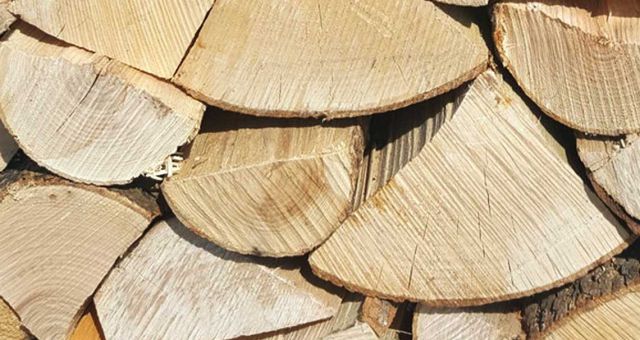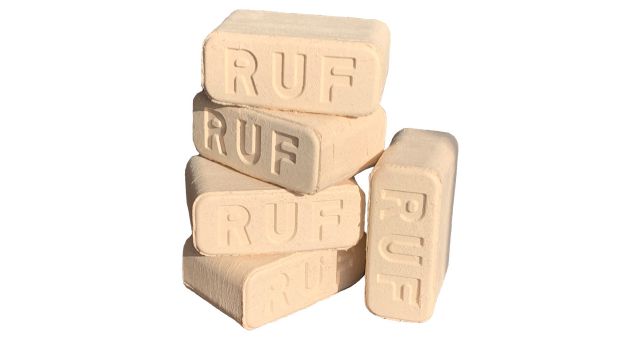You may have heard the term ‘wet wood’ around a lot recently when it comes to firewood and be wondering exactly what it means. You may also be wondering why people are telling you to avoid it. Well, we are here to answer that for you.
What is wet wood?
Wet wood does not just refer to wood that is literally wet on the outside as many believe. Whilst wood that feels or looks wet on the outside is included here, sometimes the reference to wet wood refers to the inside of the wood. Whilst the wood you are buying may appear to be dry on the outside so looks safe to burn, it might not be at all.
The moisture content of wood is measured based on the inside of the wood. The way this is done is by using a moisture meter. Typically a moisture meter works by inserting two small prongs into the end of the wood. The pins emit an electrical current which it then measures for resistance. Water (moisture) conducts electricity, whilst wood doesn’t. Meaning the dryer the wood, the more resistance. The meter will use this to calculate a moisture percentage. A pinless meter uses a sensor pad that just contacts the wood’s surface to give a moisture percentage reading.
A moisture reading of over 20% is considered to be wet wood. Usually Kiln Dried Wood is dried to a point that it contains less than 20% moisture.
For wood to be approved and certified by the Ready to Burn Scheme, it must have a moisture reading of less than 20%. All of our firewood is Ready to Burn compliant. To find out more about what the Ready to Burn Scheme is, head over to our Information Page on the Scheme.
Why should you avoid it – What are the downsides?
There are multiple reasons why you should avoid burning wet wood, as appealing as it may seem to go and collect your own wood to burn or to go buy wet wood as it is cheaper. It’s certainly not the best idea. Here is why:
Emissions & Smoke Production
The biggest issue with burning wet wood is the effects it has on the environment. Wet wood produces more smoke and harmful by-products that pollute the air. The process of kiln drying wood burns off any sap and moisture or other harmful particles that cause smoke and pollutants resulting in a more environmentally-friendly fuel. The smoke is also dangerous to inhale should it leak back into your room or if you are using an open fire. Due to the volume of moisture in the wood, burning it produces large amounts of thick smoke too which is damaging to the environment and bad for your chest should it creep inside your home.
Ineffective Burn
Another issue with wet wood is the way in which it burns. Wet wood is very difficult to get lit as the moisture in the wood prevents it getting to “ignition” temperature easily. This then has a knock on effect in terms of the burnability of the wood. The wood struggles to reach a good temperature for heat to be produced and can actually cause it to go out. This means you will spend a lot of time trying to get it lit and maintaining it to keep it lit, all for a low amount of heat or for it to go out anyway.
Due to the way wet wood burns, or rather, struggles to burn it is not cost effective in the slightest nor is it efficient as a long standing fuel. You will find that whilst the wood itself is cheaper, you’ll use more kindling and firelighters to light the fire. You’ll also find that you will need to burn more logs to get a decent amount of heat. In most cases, you’ll need to store the wood and wait for it to dry out, or mix the wet wood with dry wood to help the burn.
More Condensation
One of the biggest downsides and actually a danger of burning wet wood in your stove is caused by the additional water vapour given off by burning the wood. The vapour combines with other particles from the wood which then collects in the chimney when it dries, leaving behind a residue. The danger of this is that it can drop back down or block the chimney which could lead to a chimney fire.
Damage to the Stove Glass
Again this is caused by the moisture burning up and leaving behind a residue which then sticks and could potentially cause corrosive damage or flare ups. The last thing you want to do is compromise the safety of your fireplace.
Spitting
The moisture in the wood causes splitting and cracking to occur in the wood as pressure builds up whilst the vapour tries to escape. Sometimes the splits and crack can cause a small amount of wood to break off which may spit out from the fire. This may hit the stove glass or fall out onto the floor if the fire is open. This might lead to damage to the surrounding carpet.




